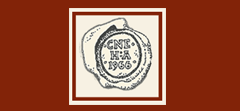Abstract
In the late 20th century, archaeological botanical and ethnobotanical studies supported Strawbery Banke Museum’s interpretations of reconstructed landscapes. Curatorial and archaeological research expanded the comparative study collections of ceramics, glass, and personal-adornment artifacts, and encouraged decorative- arts scholars and archaeologists to use the collections for their research, publication, and programming. Field schools, study groups, and rotating archaeological exhibits were created annually to communicate current research. Internships, summer camps, and school programs introduced the public to archaeology and the diverse history of members of the waterfront community. With the commitment of the curators and the museum director, the program was staffed with archaeologists, interns, and community volunteers. The program adapted to its current role as a 21st-century historic-sites museum as institutional goals changed
Recommended Citation
Pinello, Martha
(2020)
"Tides of Public Archaeology: Reseeding the Banke, 1985–2006,"
Northeast Historical Archaeology:
Vol.
49
49, Article 5.
Available at:
https://orb.binghamton.edu/neha/vol49/iss1/5


